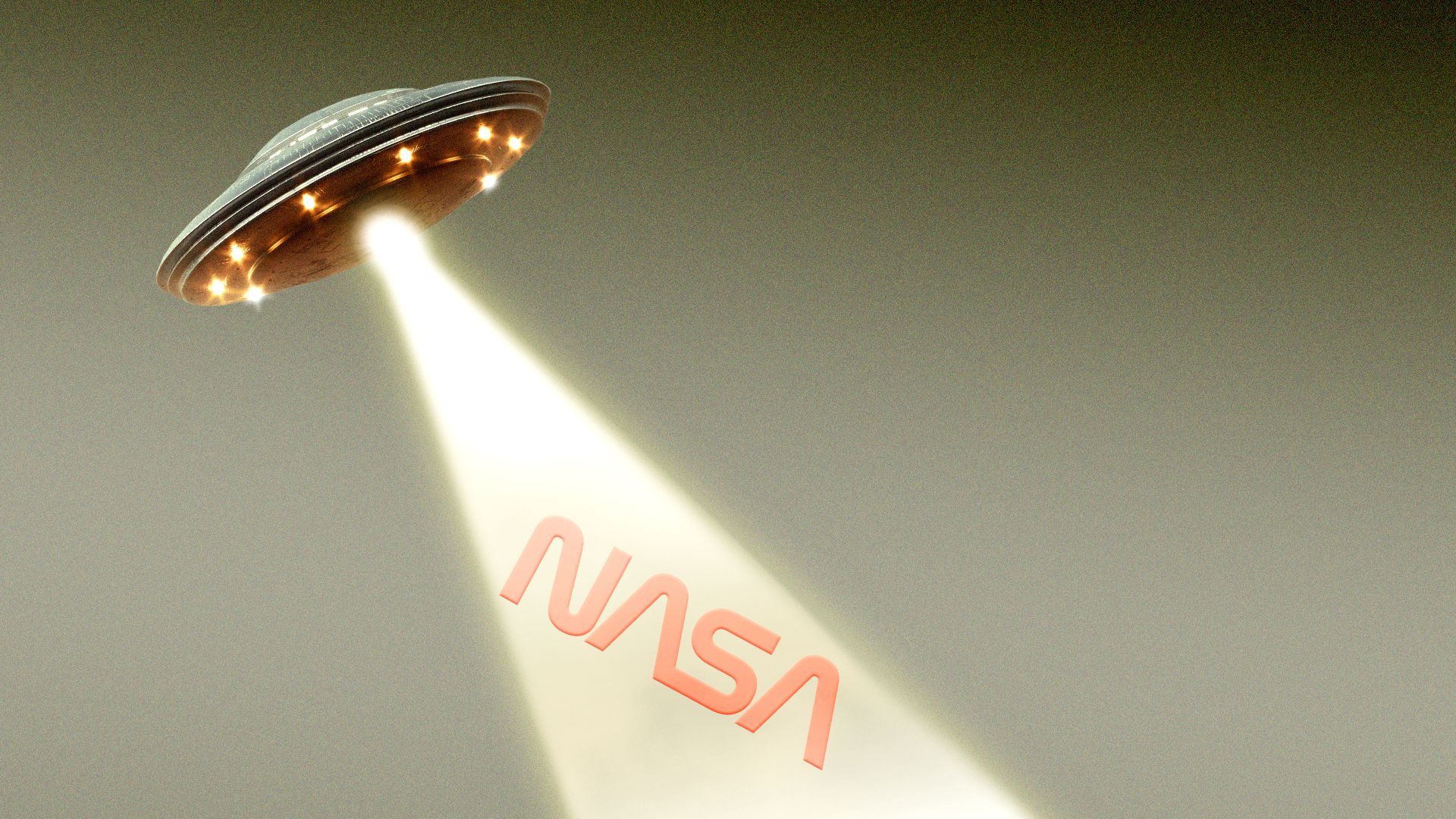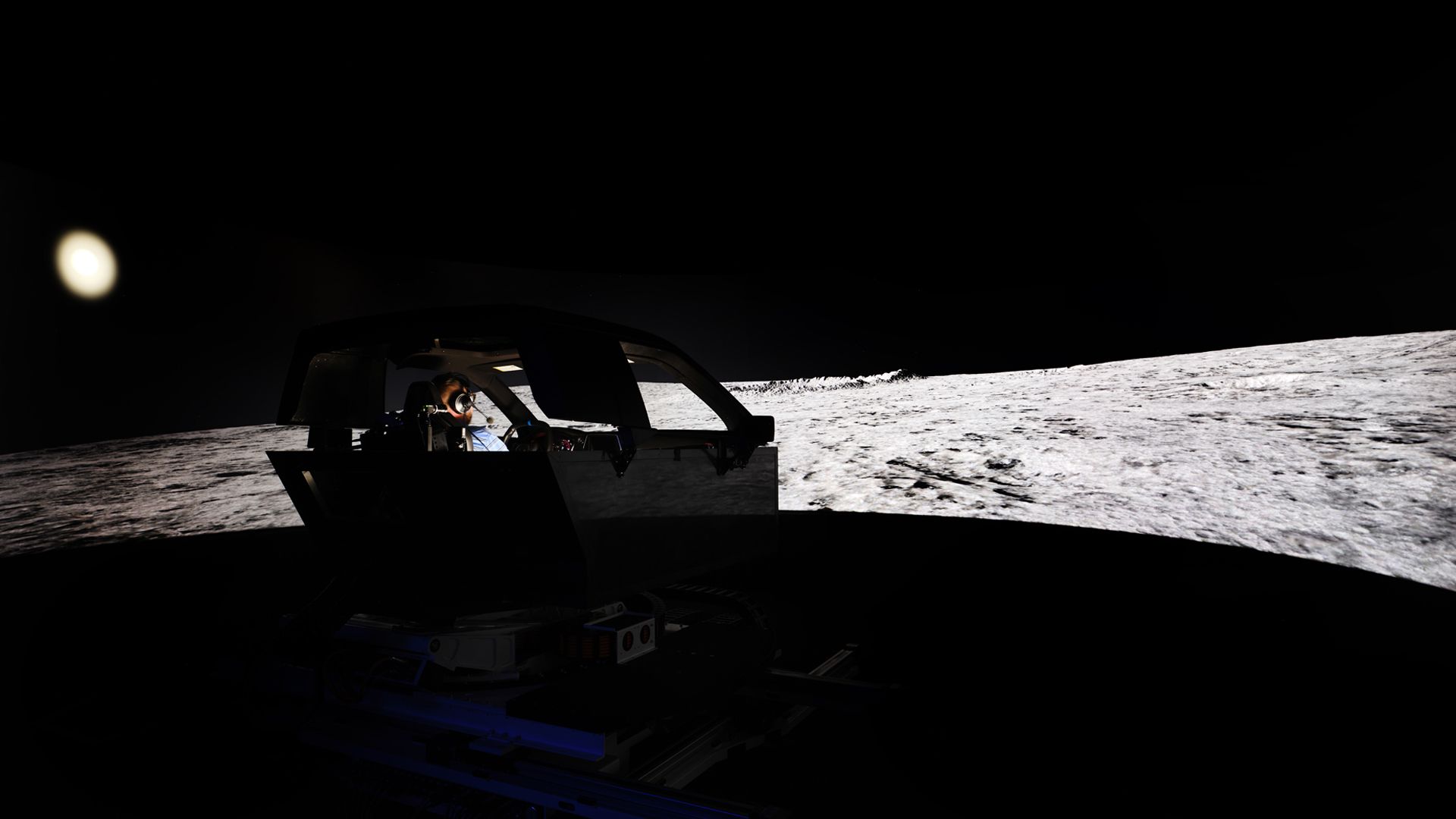| | | | | | | | | | | Axios Space | | By Miriam Kramer · Jun 14, 2022 | | Thanks for reading Axios Space. At 1,490 words, this newsletter is about a 5½-minute read. - Please send your tips, questions and your favorite quotes from "Contact" to miriam.kramer@axios.com, or if you received this as an email, just hit reply.
| | | | | | 1 big thing: NASA's risky mission to investigate UAPs |  | | | Illustration: Annelise Capossela/Axios | | | | NASA is mounting an investigation into unidentified aerial phenomena — a mission some experts and even some of NASA's own leadership warn could put the space agency's good name at risk. The big picture: NASA has historically focused its life-seeking efforts on searching for signs of microbes on Mars; watery, possibly life-supporting moons in the solar system; and signs of distant, intelligent life. - UFOs are a very different story. NASA and others have said there is no evidence UAPs are extraterrestrial in origin, and the space agency's investigation isn't out to prove they are.
- But by launching the investigation, NASA is wading into an area rife with conspiracy and messaging that's difficult to control, which could be a risk for the agency's stellar public reputation.
"There are many, many examples where people lean forward into a field that is not yet accepted. It's controversial or has some reputational risks," Thomas Zurbuchen, NASA's associate administrator for science, said at a news conference. - "In some domains, surely, this will not just be met with utter enthusiasm, but I do believe that it is absolutely necessary."
Catch up quick: NASA's investigation announced last week will focus on collecting data to learn more about UAPs, which they define as "observations of events in the sky that cannot be identified as aircraft or known natural phenomena," according to a press release. - Astrophysicist and president of the Simons Foundation David Spergel will lead the team. NASA says the study will have a budget of about $100,000 and will take about nine months to complete.
- Unlike some previous UAP investigations that relied on classified data that can't be shared with the public, the NASA project will make its report and data accessible to anyone.
- "I think there is new science to be discovered," Zurbuchen said. "There have been many times where something that looked almost magical turned out to be a new scientific effect."
Yes, but: By mentioning its life-seeking scientific enterprises in the same press release and news conference announcing its new UAP initiative, some agency watchers say NASA is muddying the waters. - "If you say this is unrelated to our studies about alien life, however, here are studies of alien life, that's what people are going to take away," Sarah Scoles, author of the book "They Are Already Here" on UFO culture, told Axios.
- "I don't see any reason to connect UFOs to astrobiology, other than a sort of 'aliens of the gaps' argument where people assume that if they don't have an explanation, it might be aliens," cosmologist Katie Mack said.
- "Whatever comes out of this will remain vague because they're not going to single-handedly — with $100,000 — be able to explain every piece of incongruous data," astrochemist Clara Sousa-Silva told Axios.
- "If it's vague, it's going to attract conclusions that are reputational risks," she said.
Background: NASA has largely stayed out of discussions of UAPs and UFOs even as the public and Congress have become increasingly interested in the subject. The government released a report last year that examined about 140 UAP incidents over the past 20 years. - But Zurbuchen said no subject should be off limits for the space agency and science in general.
- The team will be expected to tackle questions around UAPs with open minds and possibly develop a structure for future studies to help pin down what these phenomena might be.
Between the lines: It's possible NASA's decision to publish its UAP report with full transparency will help combat some claims that the U.S. government is hiding evidence about UAPs from the public. - However, the initiative could still embolden those who most fervently believe UAPs are extraterrestrial in origin.
- "No matter how much data they analyze, someone who is a believer is always going to say, 'But what about the stuff we don't see?'" Scoles said. "Just like everything UFO, the belief in UFOs as alien is always unfalsifiable."
|     | | | | | | 2. Driving on the Moon |  | | | GM engineers used a simulator to imagine driving on the moon. Photo courtesy of GM | | | | A next-generation lunar rover is the first vehicle developed for long-term, recurring use on the Moon, my colleague Joann Muller writes. Why it matters: With its Artemis missions, NASA wants to create a sustainable presence on the Moon, so a few dozen lunar pickup trucks may come in handy as the agency starts to build the necessary infrastructure. The intrigue: General Motors and Lockheed Martin are building the rover — called the Lunar Mobility Vehicle, or LMV — on spec, without a NASA contract. - Their goal is to launch the first autonomous vehicle on the Moon by 2025 — before Artemis astronauts arrive — so they can begin collecting valuable information about the lunar surface.
- The companies are betting the growing commercialization of space will create additional opportunities outside of NASA as well.
- The goal is for the vehicles to last at least 10 years on the Moon, Derek Hodgins, Lockheed's director of product strategy and sales for lunar infrastructure services, tells Axios.
The big picture: Other companies are working on lunar rovers too, including Nissan, Northrop Grumman and Astrolab, a startup launched by former SpaceX engineers. Yes, but: The Moon's extreme environmental conditions and unique physics present enormous engineering and design challenges. - The vehicle's batteries need to withstand a nearly 500 F temperature swing between day and night, for example.
- And unlike carefully monitored robotaxis in San Francisco, engineers had to design driverless technology for the unmapped, unpaved terrain of the Moon from a lab hundreds of thousands of miles away.
- The lunar surface is also grittier and more abrasive than a typical off-road dirt trail, making the suspension design more challenging, GM said.
How it works: Using an advanced "driver-in-the-loop" simulator borrowed from its NASCAR racing activities, GM engineers created a virtual lunar surface, complete with craters, rocks and one-sixth Earth gravity. - Their first chassis design, which used the Hummer EV as a baseline, didn't move, so they softened the suspension and gave the vehicle mesh wheels.
- But "driving on the Moon is like driving on ice," Jeff Vogt, GM's advanced vehicle dynamics lead engineer, told Joann.
- "We learned pretty quickly that if you accelerate too hard to climb an incline, with lower gravity, you launch into space."
Subscribe to Axios' What's Next newsletter here to read more of Joann's coverage. |     | | | | | | 3. Lonely black hole |  | | | Illustration of a black hole in the Milky Way. Image: FECYT, IAC | | | | Astronomers have discovered what they think could be a black hole roaming the Milky Way all by its lonesome. Why it matters: The discovery of this possible black hole will allow researchers to pin down exactly how many of these objects may exist out there in our galaxy and how far away they might be, helping illuminate the nature and evolution of these mysterious objects a little bit more. - These stellar-mass black holes are typically found with companion stars, whose gas can fall onto the black hole, a stellar event that can be seen with X-ray telescopes.
- This possible black hole, however, has no such companion.
What's happening: The Hubble Space Telescope was able to measure the object — which is about 5,000 light-years from Earth — during observations that took place over the course of six years. - Two teams of scientists used the Hubble to observe the object, whose extreme density warped the light of a star 19,000 light-years away from Earth as it passed between that star and the telescope.
- Because of this discovery, scientists now think the nearest black hole of this kind is no more than 80 light-years away from Earth.
But, but, but: It's possible the object isn't a black hole at all. - One team of researchers found the object is about seven times the mass of the Sun, firmly putting it in the mass range of a black hole.
- The other team estimates the object is between 1.6 and 4.4 solar masses. The lower range would make it a neutron star, and the higher range would make it a black hole.
- "As much as we would like to say it is definitely a black hole, we must report all allowed solutions. This includes both lower-mass black holes and possibly even a neutron star," Berkeley's Jessica Lu, who is on the team with the lower mass estimate, said in a statement.
|     | | | | | | A message from Axios | | Get smarter, faster on Cryptocurrencies | | |  | | | | Axios Crypto brings you daily updates on the most consequential trends in cryptocurrency and the blockchain Subscribe for free | | | | | | 4. Out of this world reading list |  | | | Illustration: Shoshana Gordon/Axios | | | | Space telescope spots unexpected starquakes (Katie Hunt, CNN) Astra rocket suffers major failure during launch, 2 NASA satellites lost (Tariq Malik, Space.com) Cargo Dragon launch rescheduled for July after identifying hydrazine leak (Jeff Foust, SpaceNews) FAA requires SpaceX to make environmental adjustments to move forward with its Starship program in Texas (Michael Sheetz, CNBC) X-ray astronomy is opening a new window on the universe (Alison Snyder and me, Axios) |     | | | | | | 5. Weekly dose of awe: Winds on Mars |  | | | Gif: NASA/JPL-Caltech/SSI | | | | Oh to feel that Martian wind blow. - The Perseverance rover captured this view of dust devils swirling on Mars in July 2021.
- The spacecraft has been exploring the Red Planet's Jezero Crater, thought to be the leftover remains of a long-dry river delta and perhaps one of the best places to search for signs of past life on the world.
|     | | | | | | A message from Axios | | Get smarter, faster on Cryptocurrencies | | |  | | | | Axios Crypto brings you daily updates on the most consequential trends in cryptocurrency and the blockchain Subscribe for free | | | | Big thanks to Alison Snyder and Sheryl Miller for editing this week's edition and to Joann for her driving skills. If this newsletter was forwarded to you, subscribe. 👽 |  | It's called Smart Brevity®. Over 200 orgs use it — in a tool called Axios HQ — to drive productivity with clearer workplace communications. | | | | | | Axios thanks our partners for supporting our newsletters. If you're interested in advertising, learn more here.
Sponsorship has no influence on editorial content. Axios, 3100 Clarendon Blvd, Suite 1300, Arlington VA 22201 | | | You received this email because you signed up for newsletters from Axios.
Change your preferences or unsubscribe here. | | | Was this email forwarded to you?
Sign up now to get Axios in your inbox. | | | | Follow Axios on social media:    | | | | | |
No comments